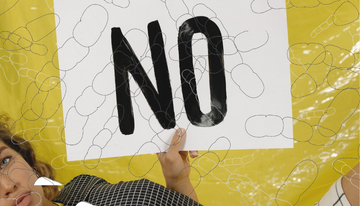The Plaque: what is it? Where does it come from? And how can we get rid of it?
The Plaque or the origin of every dental problem
I wake up, brush my teeth – brush my teeth, go to bed. This is my daily oral hygiene routine, always accompanied by my mom's urging voice: "Did you brush well?"
Does anyone remember? We take a portion of toothpaste and spread it all over our mouth, just so we don't miserably fail the breath test. Fortunately, in the meantime, we've come to terms with it, also thanks to the thousands of advertisements that made us feel a bit guilty, or not! Or not?
Those who already know the answer are free to do something else. The Plaque: but what is it? Where does it come from? And how can we get rid of it?
What is Plaque?
In simple terms, dental Plaque is a film of bacteria that forms on our teeth. We mainly find it in places that are difficult for the toothbrush to reach. Can you do a small test: run your tongue over your teeth – if you haven't done your oral care yet today, you'll feel something that gives the sensation of fur. That's the Plaque. It's hard to see, as it's practically transparent. But believe me, it's there.
After cleaning your teeth, it's time to clean your teeth again. As soon as you put down your toothbrush, Plaque begins to form.
Immediately after you brush your teeth, a protective layer of proteins present in our saliva forms, a so-called pellicle. This pellicle protects the teeth from acids and ensures that the enamel is enriched with the necessary minerals.
Initially, the film is free of bacteria. But gradually, a multitude of bacteria from our microbiotic community appear – the production of the Plaque has begun. Throughout the day, food residues, sugars, and tissue cells are added to it.
What effect does the Plaque have?
Sugars form a type of network that easily accumulates various bacteria. A process that further promotes the spread of Plaque. In addition, they serve as a source of nourishment for streptococci. They transform sugars into acids, which consequently attack the enamel and make it porous. Thus, bacteria are able to penetrate it, moving towards the inside of the tooth. Here is the cavity.
Attention: Keep reading – from here on in, our [product/brand] comes into play promis gel .

Bacteria continue to spread on the enamel and give the so far transparent Plaque its characteristic yellowish color. It's time to brush your teeth. If you do without it, the Plaque builds up and this leads to the tartar whose rough surface promotes further deposits of bacteria.
From now on, even the gums are under attack. Plaque and tartar build up between the tooth and the gums and promote tissue degradation, which in turn begins to recede progressively. However, even before that, will igniteThe first signs of inflammation can be red, swollen, or bleeding gums. If you don't take action now, your teeth will loosen and, eventually, will fall.
What can I do against Plaque?
You should know: the our promis gel was developed specifically for these companies antibacterial . Tests carried out in our laboratories demonstrate the effect of the gel on those bacteria that convert sugars into acids: "cuts" the hands of bacteria, so they cannot "cling" to the tooth.
If these bacteria are missing, the other bacteria will no longer find surfaces to cling to. According to our study, the teeth show the minus 70 % of bacteria responsible for Plaque (and therefore for tartar, cavities, and gingivitis). And don't forget: do not neglect your biannual visits to the dentist and hygienist to make sure your teeth are 100% healthy.

